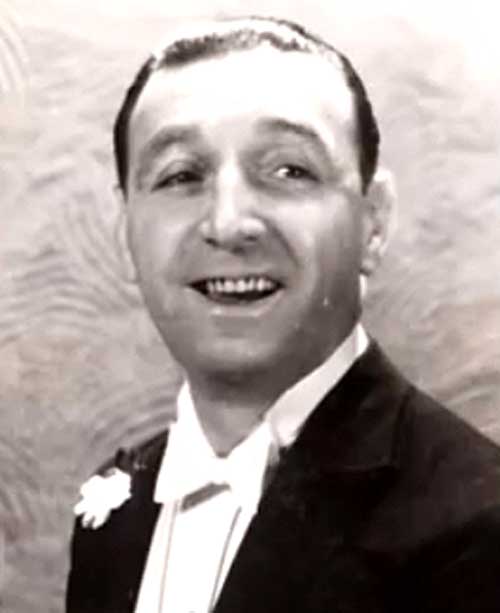Harry Hudson: (1898-1969)
At the age of 13, Harry Hudson made his first important public appearance at a Mansion House function convened by London’s first citizen with T.M. the King and Queen (then Prince and Princess of Wales) being present.



Later young Harry won highest honours at the London Collage of Music, pulling off a Royal Academy of Music Scholarship. For the next four years he toured with “The Gaieties”, playing piano and later vocals.
In 1915, a young Harry Hudson teamed up with Stanley Kirkby to form the popular music hall duo "Kirkby and Hudson". They entertained audiences with their eclectic mix of songs and humour. Several of their songs were recorded for Edison Bell.
“In 1916 The Stage magazine gave the following review of an early concert resulting from their collaboration: Popular newcomers to the bill this week are Stanley Kirkby and Harry Hudson who are making their first appearance in the West End in a double turn. They score one of the hits of the programme with syncopated harmony ... Both gentlemen possess fine voices and we thus get ragtime sung artistically and not shouted ... Altogether the duo are to be congratulated upon the excellence of their performance.”
In August 1927 Harry Hudson became the music director at Edison Bell; he remained there until late 1932 when Edison Bell was taken over by Decca. During this time he recorded profusely for the label under, Harry Hudson and the Melody Boys and under a host of pseudonyms: The Blue Jays; Paramount Rhythm Boys; The Radio Rhythm Boys; The Deauville Dance Band; The Bel-Tones; Gaiety Dance Band; Murray's Melody Men,; The Plaza Band; Riviera Dance Band; Radio Melody Boys; Rolando and His Blue Salon Orchestra and others.
These were purely studio bands and often used some of the very best session musicians in the country. In 1928 the musicians included: Harry Hudson (vocals, director); Murray Dempsey, Arthur Niblo, Sylvester Ahola, Max Goldberg (trumpets); Ben Oakley, Lew Davis (trombone); Sid Phillips (clarinet, alto/baritone sax); Ken Warner (soprano/alto sax); George Melachrino (clarinet/ tenor sax); Annunzio Mantovani and others (violin); John Paques (piano); Bill Herbert (banjo/guitar); Bill Busby (bass); Fred Spinelly, Sam Webber(drums).
Al Bowlly recorded several sessions in early Sept 1930 under Harry Hudson’s Melody Men and Paramount Rhythm Boys. The musicians were: Harry Hudson (vocals, director); Murray Dempsey, Max Goldberg (trumpets); Ben Oakley (trombone); Sid Phillips (clarinet, alto/baritone sax); Ken Warner (soprano/alto sax); George Melachrino (clarinet/ tenor sax); John Paques (piano); Bill Herbert (banjo/guitar); Bill Busby (bass); Sam Webber (drums); Les Allen, Al Bowlly (vocals).
As well as all the musician used by Harry Hudson, He also used a whole host of excellent vocalists.: Al Bowlly; Les Allen; Elsie Carlisle; John Thorne and Sam Browne; just to name a few.
“Even though Hudson stopped recording, he still remained highly active. Among other things, he selected music for the British edition of the Universal newsreel. After the war, he was working hard for the BBC, appeared in character roles in movies, and lead bands at holiday camps and piers. To many, he's perhaps best known as the pianist on the radio quiz show "Have a go!" a position he held from 1953 to 1966. He remained active until shortly before his death in 1969.”